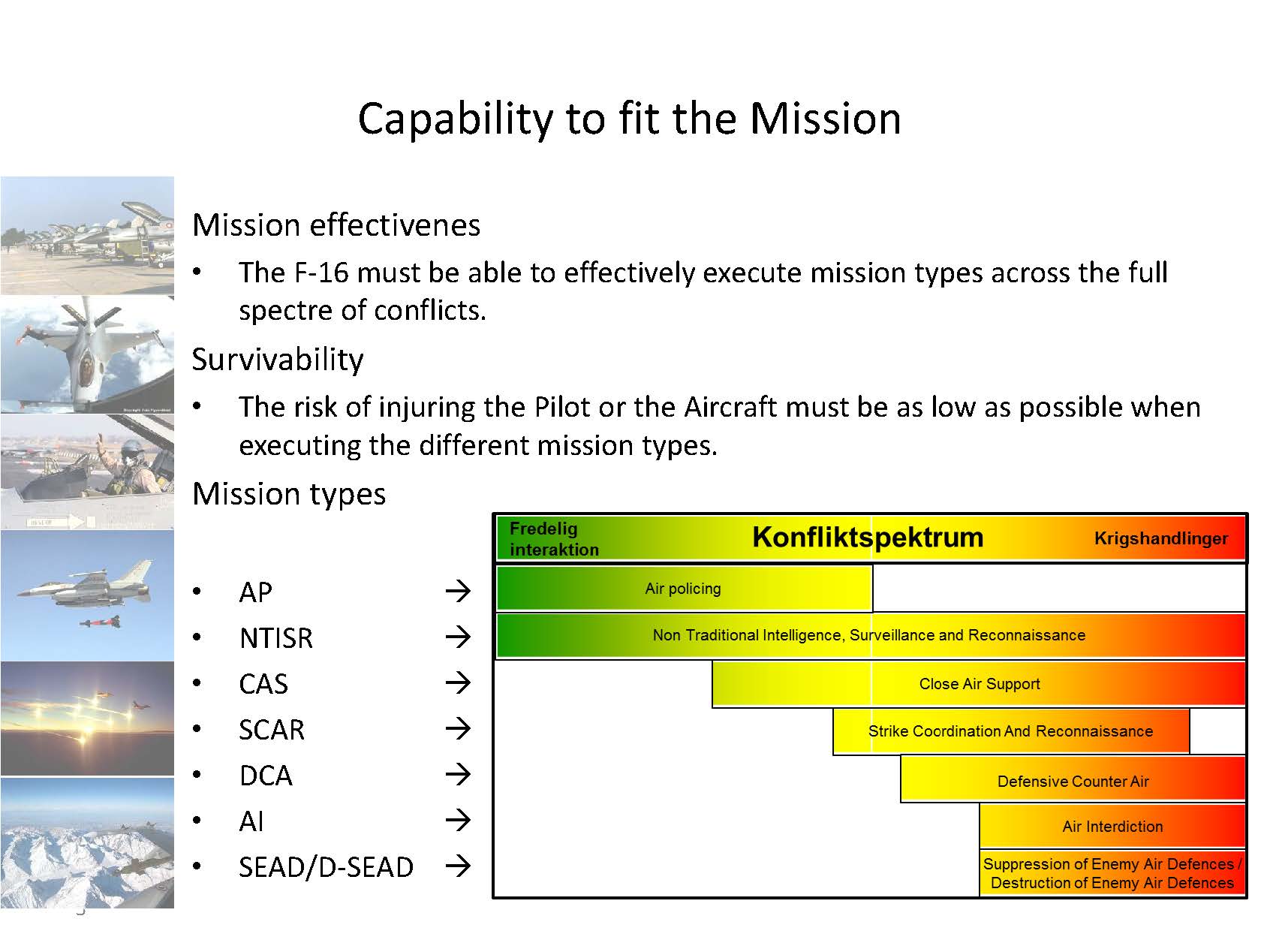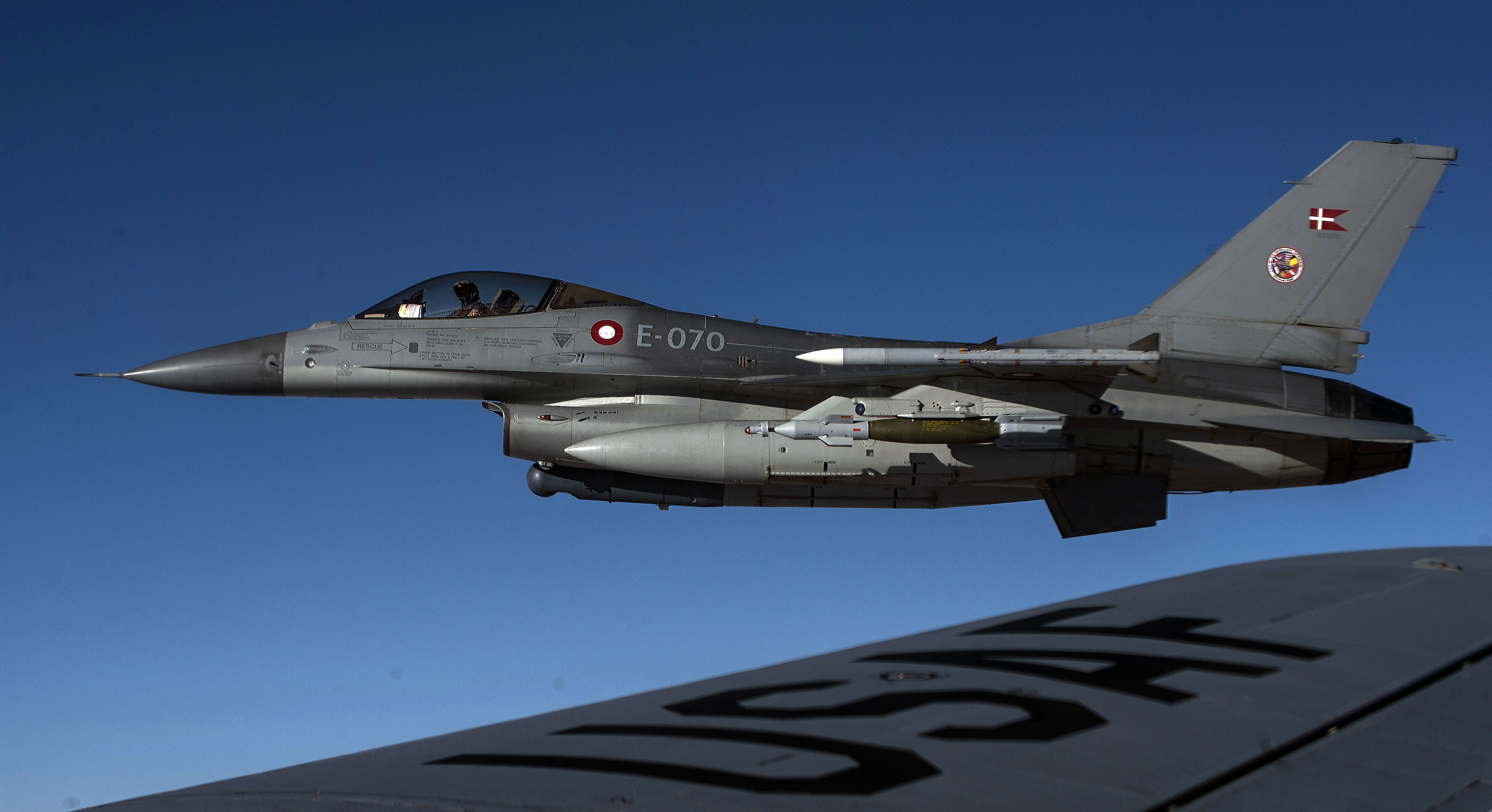Looking Back on the Royal Danish Air Force and Its F-16 Experience
The Royal Danish Air Force bought a total of 77 F-16A/B aircraft in 2 major batches and 2 attrition replacement orders. Of these, 48 aircraft and 14 spares, all upgraded to what is known as the MLU or Mid Life Update standard, will remain operational until 2020-2025 when they will be replaced by the F-35 Joint Strike Fighter. The MLU involved changes to the airframe as well as the combat systems.
Deliveries to the RDAF began in early 1980 with the aircraft having then evolved through multiple upgrades until its projected retirement in the RDAF in the mid-2020s.
During my visit to Denmark in October 2018, I had a chance to visit the main F-16 operating base in Denmark and to talk with two senior Danish Air Force officers about their experience with the aircraft and the evolution path followed by the RDAF in terms of enhanced capability and a re-focus on expeditionary operations.
Squadron 727 and Squadron 730 are both located at the Royal Danish Air Force fighter base at Skrydstrup.
During my visit I had a chance to talk with Col. Uffe “GUS” Holstener-Jørgensen, the Wing Commander, about his experience with the F-16. The Wing Commander has been flying the F-16 since 1992 and was an exchange pilot with the USAF, flew in various expeditionary operations, including in Afghanistan.
With the end of the Cold War, the Danish Air Force shifted from what they referred to as a garrison defense role to an expeditionary one. This was a work in progress after the Cold War, which required changes in how the Air Force operated as well as in the evolution of the F-16 itself.
The operational side meant that the Danish Air Force had to learn how to operate far from home, a task which required changes not only in the Air Force but in how the Air Force was linked to the broader Danish defense force and NATO. Shaping an expeditionary mindset and capability required changes as well in the F-16 itself as new capabilities and weapons were added to the aircraft, notably new ground attack capabilities, self-defense capabilities and electronic warfare capabilities.
The engagement with a broader F-16 community and with the USAF has been crucial for the Danes. Being able to train and operate with other coalition F-16 partners, notably within the EPAF or the European Participating Air Forces has been a key driver for change.
According to Col. Holstener-Jørgensen:
“All the F-16 users in Europe have our own meeting forum where we talk about the development of the F-16s together with the Americans.
“Because Denmark is a small country, we don’t have the capacity to think what it is we need and then develop it. We need a big brother like the United States Air Force to actually develop the aircraft in consultation with us and to leverage their engineering capability to develop new capabilities.”
“The EPAF collaboration on the F-16 has in my mind been the keystone to success in bringing forward F-16 capabilities, to where we are today with an advanced F-16. Indeed, today we have an outstanding offensive weapons portfolio for the F-16.”
Colonel Holstener-Jørgensen emphasized that a major advantage the F-16 program has is the significant number of users, which means that there are significant numbers of airframes in operation, which facilitate investments in modernization of the aircraft.
“With the very large number of airframes out there, that allows the cost per tail to be brought down significantly.”
The cooperation with the other European F-16 partners extended to operations in Afghanistan where the European Expeditionary Air Wing operated together where Denmark worked with Norway and the Netherlands in Afghan operations.
Although the cooperation in operations did not extend to joint maintenance, at the training level there has been a very flexible approach to working together.
Col. Holstener-Jørgensen added: “At the European Fighter Weapon Instructor Course in Leeuwarden, we actually do full integrated ops where a Danish F-16 pilot can fly a Norwegian or a Dutch F-16 and vise-versa.”
The Danes are among the most significant innovators in working coalition ops and perspectives. Given their size they need to be but clearly they are cutting edge with regard to working the coalition perspective.
My second officer with whom I had a chance to discuss the Danish F-16 experience with “SON” a 727 Fighter Squadron F-16 pilot and Electronic Warfare Office. He has around 1600 flight hours on the F-16 with 400 in combat. And one of his roles in the 727 Squadron at the Wing Level is working with his sister squadron the 730 on electronic warfare issues.
“SON” was part of the pilot cohort in the Royal Danish Air Force which experienced the growth of the Danish F-16 into a robust multi-mission aircraft. The core focus of this growth was on air to ground threats and capabilities.
For example, the main ground based threat was MANPADS, and the Danes along with other F-16 partners evolved their IR defeat capabilities at the expense of dealing with radar-guided threats.
The multi-mission evolution pursued by the Danes was done in common with other F-16 partners, notably with the members of the EPAF or the European Participating Air Forces. “For example, we are doing an upgrade on our network system which is being done with our partners which means that we share investments to get a new capability.
“We fly the same aircraft as our partners, which allows us to do common upgrades.”
One main trajectory for the F-16 upgrades has been with regard to air to ground weaponry. The Danes now have a robust arsenal of air to ground weapons which include, GBU-49/GBU-54, GBU 12/24, GBU-31 v1/v3, and GBU-38/39 and the aircraft carries a 20mm gun as well.
The air-to-air side has not been as robustly upgraded which follows the course of the Danes doing focused investment on the core threats against which they are operating. For air-to-air missions they use the AIM-120B (AMRAAM), medium-range active missile, the AIM-9X Sidewinder, a high of bore sight short range missile and the M61A1 20mm gun.
As a fourth generation aircraft, upgrades have been done in a federated manner in which case by case upgrades have been done. A number of sensors have been added in this manner, most notably the Litening G4 (ATP) pod that has provided both laser guidance to weapons, as well as secure video down and up link capabilities.
A key element of working integration has been through the Helmet Mounted Cuing System or HMCS. The HMCS has provided a significant improvement in operational capability as it provides for both air to air and air to ground sensor fusion.
The Danes have clearly evolved their F-16s as part of the broader F-16 coalition to achieve much greater multi-mission capability.
And as they evolved their aircraft, training needed to change for their pilots and maintainers.
The Danes have worked a unit training approach and have used new simulators purchased from L-3 as part of their evolved training approach.
Of course, the goal of a small air force is to be able to operate across the spectrum of warfare to support the political objectives of its nation’s leaders.

The Danes have focused not simply on an upgrade path with their airplane and doing so with other F-16 partners, but transforming the networked environment within which that aircraft operates.
I had a chance to discuss this aspect of the transition at the Karup Airbase in Jutland with the head of the Joint Data Link Operations Centre, Major Knud Agis Larsen and his staff. Here I learned that that the Danes co-developed their networks along with the evolution of their F-16s to the point whereby they can provide significant data through various means to their F-16 pilots while in flight significantly enhancing their combat effectiveness.
Links in effect are a weapon. The focus was upon not simply making the F-16s Link 16 capable but taking a systems approach and to support the process of “achieving Link 16 capable platforms.”
It is not just a question of what platforms can do organically it is about what packages of force inclusive of C2 can do in the direct defense threat environment.
Thus, although Link 16 was born in the context of the Danes looking to expand their evolutionary capabilities, it is now migrating into the extended homeland defense environment.
Major Knud Agis Larsen underscored that the Centre does not produce data per se.
“We design, establish and maintain the infrastructure necessary for exchanging of Tactical Data between C2 units and fighting platforms.
“We are the hub between various C2 systems, different tactical data link systems as well as across different domains.”
The expeditionary operations as well as Danish reach into the Arctic and into Greenland provide a challenge of operating over distance, that a non-Dane might simply not included, within the challenges of linking and communication of the force or between the force and military and civilian authorities.

But this means that the Danes have had to work non-line of sight capabilities for Link-16, which involves among other things ways to move Link 16 data over various other networks as well. And with the IP revolution, the Centre has found ways to send Link 16 data over various IP systems as well.
The Danes have found the F-16s to be a very robust aircraft capable of significant upgrades and given the large number of users worldwide, they have found ways to enhance cost effective modernization.
In short, the Danes have been part of a really remarkable transformation of the F-16, which made in their eyes the aircraft very competitive with either the Eurofighter or F-18 so they really were not interested in replacing their F-16s with either of those aircraft.
They chose the F-35 and are preparing now for that transition and are doing so based on their F-16 collaborative experience.
Featured photo shows a Royal Danish Air Force F-16 Fighting Falcon waiting for his wingman to be refueled by a U.S. Air Force KC-135 Stratotanker assigned to the 340th Expeditionary Air Refueling Squadron, during combat operations in support of Operation Inherent Resolve, over Iraq, April 20, 2015.
Coalition partners conducted the operation as part of a broader strategy to degrade and defeat the Da’esh.
(U.S. Air Force Photo by Staff Sgt. Perry Aston/ Released)

